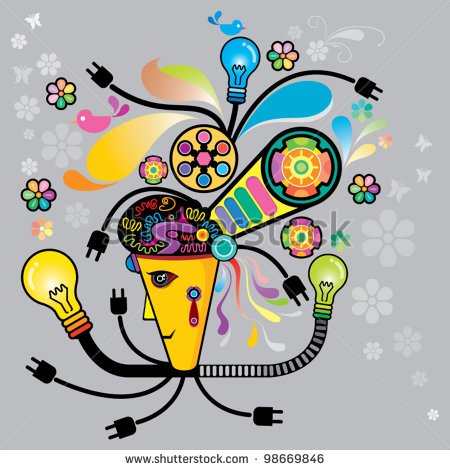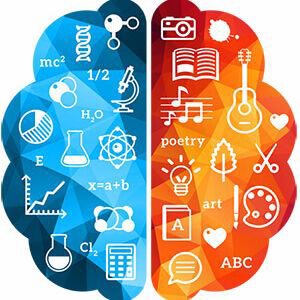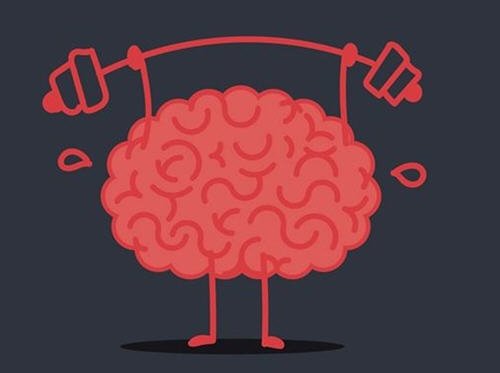The Connection of Computation on Cognitive Representation
The Connection of Computation on Cognitive Representation

Image Source
Representations are just the first key element of the cognitive science view of mental processes. Representations without anyone else are of little utilize unless something should be done with them. Having the concept of money doesn't do much for us unless we know how to compute a tip or can give back the right measure of progress to somebody. In the cognitive science view, the brain performs computations on representations. It is in this manner essential to see how and why these mental mechanisms work. What sorts of mental operations does the brain perform? In the event that we needed to get point by point about it, the rundown would be interminable. Take the case of mathematical capacity.
On the off chance that there were a different mental operation for each progression in a mathematical procedure, we could state the mind adds, subtracts, divides, et cetera. Similarly, with language we could state there are separate mental operations for making a thing plural, putting a verb into past tense, et cetera. It is smarter to consider mental operations as falling into general classifications. These classifications can be characterized by the kind of operation that is performed or by the sort of information followed up on. An inadequate rundown of these operations would incorporate sensation, perception, attention, memory, language, mathematical reasoning, logical reasoning, decision making, and problem-solving. Large portions of these classifications may consolidate virtually indistinguishable or comparable sub-processes, for instance, scanning, matching, sorting, and retrieving.
Tri-Level Hypothesis
Any given information process can be portrayed at a few distinct levels. As indicated by the tri-level hypothesis, mental or artificial information-processing occasions can be assessed on no less than three distinct levels. The most astounding or most dynamic level of examination is the computational level. At this level, one is worried about two assignments. The first is an unmistakable particular of what the problem is. Taking the problem as it might have initially been postured, in an obscure way maybe, and separating it into its primary constituents or parts can realize this lucidity. It implies portraying the problem precisy with the end goal that the problem can be explored utilizing formal strategies. It resembles posing the inquiries: What precisely is this problem? What does this problem involve?
The second assignment one experiences at the computational level concerns the reason or explanation behind the procedure. The second assignment comprises of asking: Why is this procedure here in the first place? Inalienable in this examination is the possibility of adaptiveness, the possibility that human mental processes are found out or have advanced to empower the human organism to take care of a problem it faces. This is the essential illustrative point of view utilized as a part of the transformative approach. We depict various cognitive processes and the putative purposes behind their advancement in the section dedicated to that approach.

Image Source
Venturing down one level of abstraction, we can next ask about the genuine path in which an information procedure is done. To do this we require an algorithm, a formal methodology or framework that follows up on informational representations. Note that algorithms can be completed paying little heed to a representation's significance, algorithms follow up on the form, not the importance, of the symbols they transform. One approach to consider algorithms is that they are actions used to control and change representations. Algorithms are formal, which means they are very much characterized. We know precisely what happens at each progression of an algorithm and how a specific stride changes the information being followed up on. A mathematical formula is a decent case of an algorithm.
A formula determines how the information is to be transformed, what the means are, and what the request of steps is. This sort of depiction is assembled at the algorithmic level, some of the time likewise called the programming level. It is proportionate to posing the inquiry: What information-processing steps are being utilized to take care of the problem? If we somehow happened to draw a similarity with computers, the algorithmic level resembles programming, since programming contains guidelines for the processing of information. The most particular and solid sort of depiction is formulated at the implementational level. Here we ask: What is the information processor made of?
What sorts of physical or material changes underlie changes in the processing of the information? This level is at times alluded to as the hardware level, since, in computer speech, the hardware is the physical stuff the computer is made of. This would incorporate its different parts — a monitor, hard drive, keyboard, and mouse. At a littler scale, computer hardware comprises of circuits and even the stream of electrons through the circuits. The hardware in human or animal cognition is the brain and, at a littler scale, the neurons and exercises of those neurons.
Now, one may ponder, why do we even need an algorithmic or formal level of examination? Why not simply outline physical processes at the implementational level onto a computational depiction of the problem, or on the other hand, onto the behaviors or actions of the organism or gadget? This appears to be less complex, and we require not turn to the possibility of information and representation. The reason is that the algorithmic level discloses to us how a specific framework performs a computation. Not every single computational framework tackle a problem similarly. Computers and humans can both perform expansion, yet do as such in radically unique styles.

Image Source
This is valid at the implementational level clearly, however understanding the distinction formally reveals to us much about option problem-solving approaches. It additionally gives us bits of knowledge into how these frameworks may register answers for other novel problems that we won't not get it. This parceling of the examination of information-processing occasions into three levels has been condemned as being fundamentally shortsighted, since each level can thus be additionally subdivided into levels. Beginning at the best, we should think about the brain as one organizational unit; brain regions as relating to another organizational unit one stage down in spatial scale; and after that neural systems, singular neurons.
Views of Classical and Connectionist
Before completing our dialog of computation, it is critical to separate between two unmistakable conceptions of what it is. Up until now, we have been discussing computation as being founded on the formal frameworks idea. In this view a computer is a formal symbol manipulator. How about we separate this definition into its segment parts. A framework is formal in the event that it is syntactic or rulegoverned. The standards of language and science are formal frameworks since they determine which sorts of passable changes can be made to symbols. Formal frameworks additionally work on representations free of the content of those representations.
At the end of the day, a procedure can be connected to a symbol paying little mind to its significance or semantic content. A symbol, as we have just shown, is a form of representation and can expect a wide assortment of forms. Control here infers that computation is a dynamic, typified process that happens after some time. That is, manipulations are actions, they happen physically in some sort of computing gadget, and they set aside some opportunity to happen, that is, they don't occur promptly. Be that as it may, this is not by any means the only conception of what computation is. The system way to deal with computation contrasts from the classical formal frameworks approach in cognitive science in a few ways.
In the classical view, information is spoken to locally, as symbols. In the connectionist view learning is spoken to as an example of activation or weights that is distributed all through a system. Processing style is additionally extraordinary in each approach. The classical view has processing happening in discrete stages, though in connectionism, processing happens in parallel through the concurrent activation of hubs. Some cognitive researchers make light of these distinctions, contending that information processing happens in the two frameworks and that the tri-level hypothesis can be connected similarly to both.

Image Source

Yeah!! Nice post elegant Blog man ... you it machine #Steemit
Happy for you @juvyjabian
Thanks